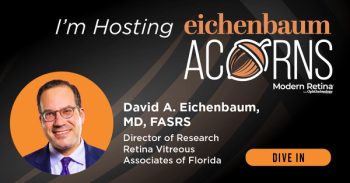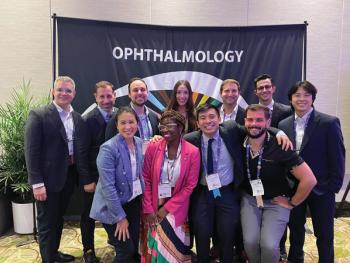
Q&A: Matthew Starr, MD, shares his experience using scleral suture toric intraocular lenses for patients with significant corneal astigmatism
Matthew Starr, MD, discusses techniques for correcting astigmatism in patients lacking capsular support, enhancing visual outcomes surgery.
Matthew Starr, MD, an assistant professor of ophthalmology and residency program director at Mayo Clinic presented at the American Society of Retina Specialists (ASRS) annual scientific meeting. This event was held in Long Beach, California, from July 30 through August 2, 2025.
His presentation was titled, "Secondary scleral-sutured toric intraocular lens for astigmatic correction in the absence of capsular support." Following his presentation, Modern Retina had the chance to speak with Starr to learn more about this research.
Note: The following conversation has been lightly edited for clarity.
Modern Retina: You presented on intraocular lenses in specific patients here at ASRS 2025. Can you share some of the highlights from this research?
Matthew Starr, MD: My talk was on the use of scleral suture toric intraocular lenses for patients who have significant corneal astigmatism and who need a secondary lens so, they don't have a capsule support. It's kind of an interesting topic amongst retina surgeons, because we're talking about refractive outcomes, which we usually don't do as retina surgeons. We're trying to push the field forward for patients who want to see better after what we're doing for them. And how can we get better? We've seen that patients have about an 80% refractive outcome within a diopter of their target following for retina surgery. But how can we get it closer to the 90-95% that our cataract surgeons are seeing?
Part of the reason is thought that we have patients who have significant corneal astigmatism. We're not addressing that. And so in this study, we're able to look at our outcomes. We're specifically targeting patients who have regular corneal astigmatism, don't have an irregular cornea, don't have cornea lactasia, who they may benefit from this toric suture lens. We're marking the axis of steep astigmatism preoperatively, and then placing our toric arcanumas around that axis, and then placing a toric lens, it's a Bausch + Lomb enVista hydrophobic lens MX60T, based on preoperative keratometry measurements in that axis.
We found that patients had a 67% mean reduction in percent cylinder post-operatively, which is a little bit lower than what your clinical trial data we'll show, which is about 75% to, sometimes 85%, but this is one of the largest and first surgical studies to look at this kind of this problem. And we had a significant reduction from preoperative mean astigmatism to post-operative mean corneal astigmatism. We actually had a quarter of patients have less than 1 quarter adapter of astigmatism following surgery. So, we know this technique works, we're going to keep further refining it, but really it's about patient counseling, goretex suturing and choke arcanial placement to get the optimal results.
Modern Retina: This is an off-label use. Can you share why this may be a solution for this population of patients, and why retina surgeons may need to think outisde of the box for solutions like this?
Starr: All the lenses we're using are off label, but this lens is currently available. I think I'm just trying to get this out there that this is a viable option for a select group of patients. I think there's a lot of kind of topics we're not touching on including payment and things like that, but this is something that's viable for the motivated patient who wants to get as good a vision as they can. I think a lot of our push right now in these secondary lenses to get spectacle independence. I don't counsel my patients that they can achieve that, but this is something we can do to try to get them there. But there's still a really good chance. There's been a lot of good data on reducing astigmatism, [which] leads to better overall quality of vision, so we're going to try to do that. But even any reduction is going to be what we shoot for.
MR: What might this research or these procedures look like going forward?
Starr: I think moving forward, I've gotten pickier on who I choose for this surgery. It was a learning phase, and I've refined it. I did a lot early on, and I've slowed down partially because I'm really picky, but I want patients to understand, I want them to have a large amount of astigmatism, because they get the most benefit from it. I think this continuing to get this out there as a viable option, and it's important for retina surgeons to be just cognizant of refractive outcomes for these types of patients. Any way that they can do that is going to be something we want to continue to do to move the field forward.
Newsletter
Keep your retina practice on the forefront—subscribe for expert analysis and emerging trends in retinal disease management.












































